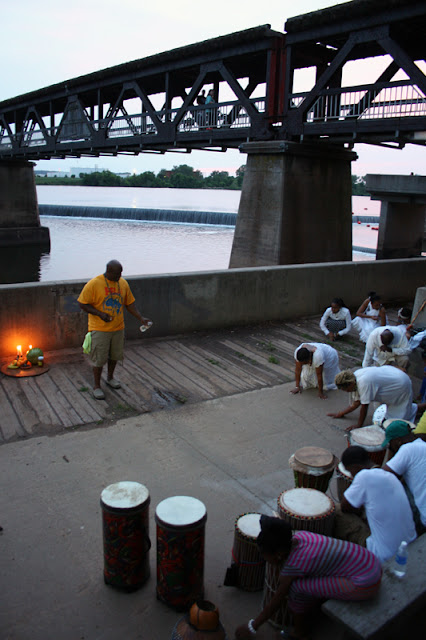 |
| Cahokia
Mounds is the largest
pre-Columbian settlement north of Mexico. Photos by Yiren Gallagher
Cahokia Mounds
The remains of the most sophisticated prehistoric native
civilization north of Mexico are preserved at Cahokia Mounds State Historic
Site. Within the 2,200-acre tract, located a few miles west of Collinsville,
Illinois, lie the archaeological remnants of the central section of the ancient
settlement that is today known as Cahokia. This agricultural society may have had
a population of 10–20,000 at its peak between 1050 and 1150. Primary features
at the site include Monks Mound, the largest prehistoric earthwork in the
Americas, covering over 13 acres and standing 100 feet high. In 1982, the United Nations Educational,
Scientific, and Cultural Organization (UNESCO), designated Cahokia Mounds a
World Heritage Site for its importance to our understanding of the prehistory
of North America.
Cahokia Mounds Reconstructed. Cahokia Mounds Museum Society
Mounds, Oklahoma
|
My interest in the city of Mounds is solely for the name sake. Mounds, a town in Creek County, Oklahoma originally named after the Creek poet, Posey and later renamed Mounds for twin hills that were nearby. The discovery of oil in the Glenn Pool field in 1905 turned Mounds into a shipping point for crude oil instead of cattle.
However, the truly amazing archaeological site in Oklahoma is the mound
center of Spiro in the Arkansas River valley in extreme eastern
Oklahoma. Spiro was the westernmost of the main centers in the
Mississippian world during the 12th through mid-15th centuries (A.D.
1100-1450). In 1933, local entrepreneurs formed the "Pocola Mining
Company" to loot Craig Mound, the site's largest mound. The destruction of much of this mound is
one of the great tragedies of American archaeology.
The mounds
have been excavated over the years and have produced a wide range of art and
artifacts. Dubbed the "King Tut of
the Arkansas Valley" by the Kansas City Star in 1935, the Spiro Mounds
have yielded elaborate ceremonial grave goods including basketry, feather capes
and cloth. Based on these historic finds, the Spiro Mounds have been
hailed as home to the most elaborate, artistic and sophisticated decoration of
any other Mississippian site. 1978, the Spiro Mounds
State Park was open and today
the site is situated on 150 acres of protected land that
encompasses the twelve original mounds, the village area and sections of the
ancient support city.







